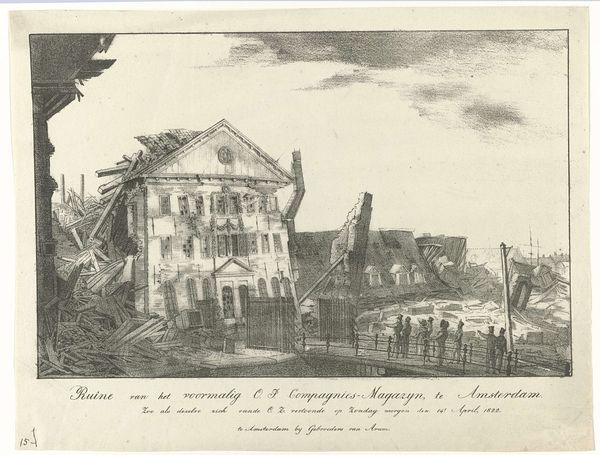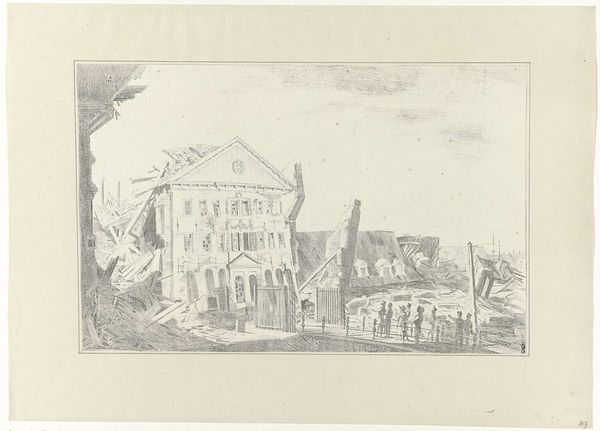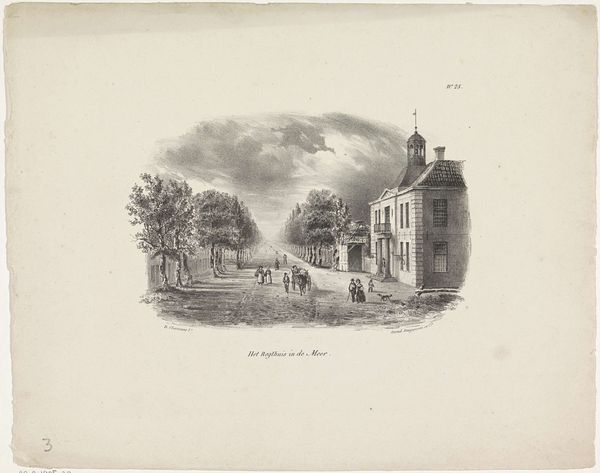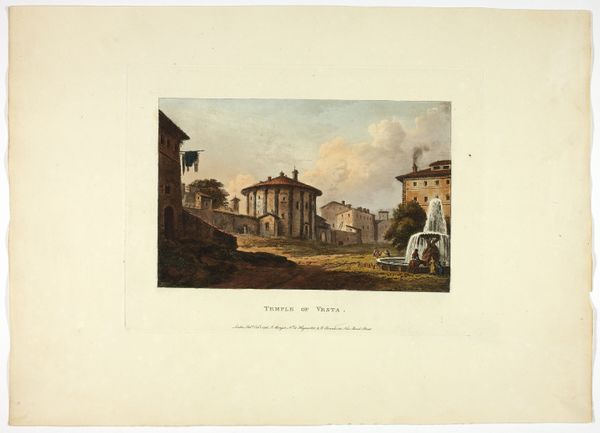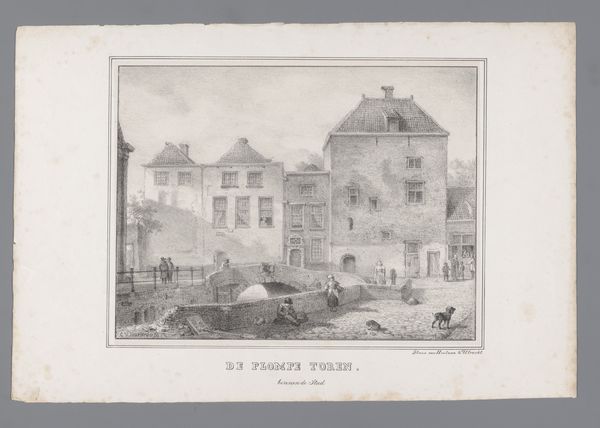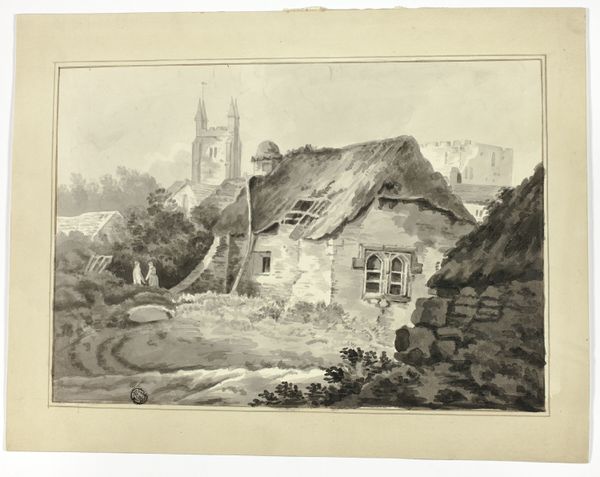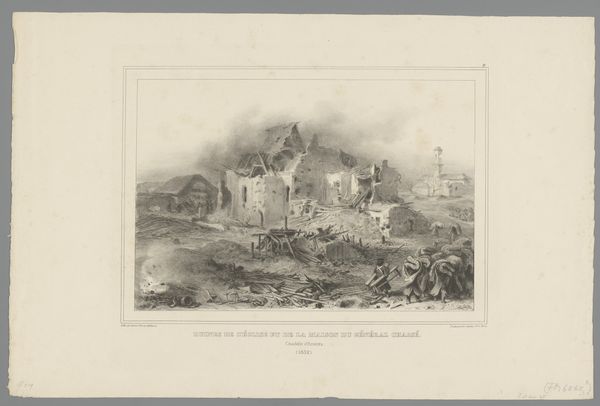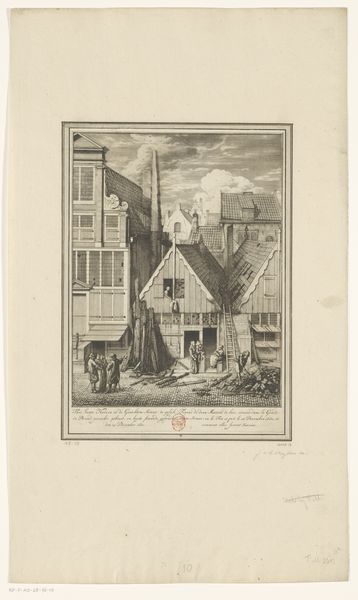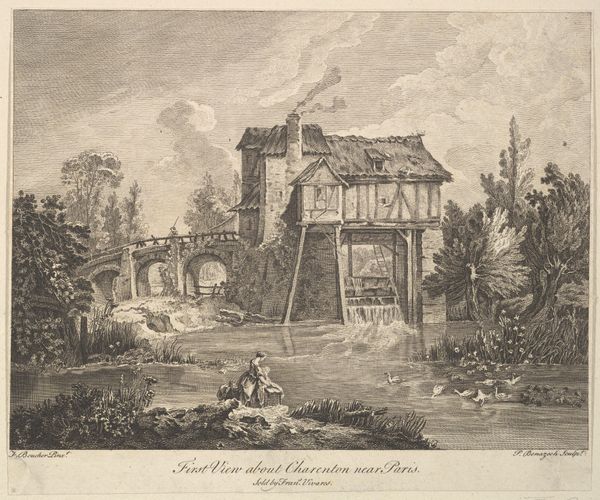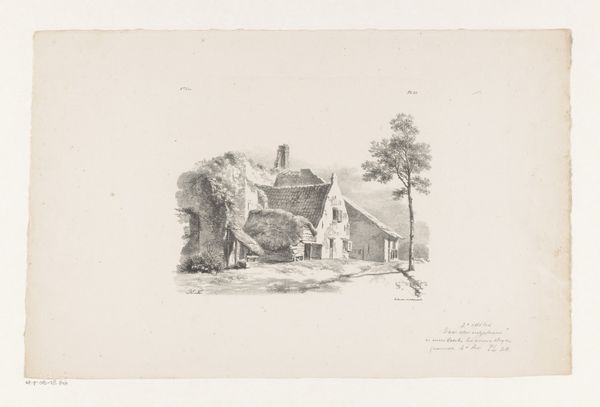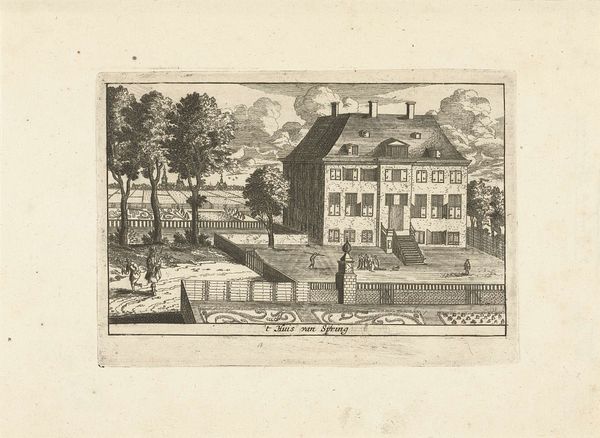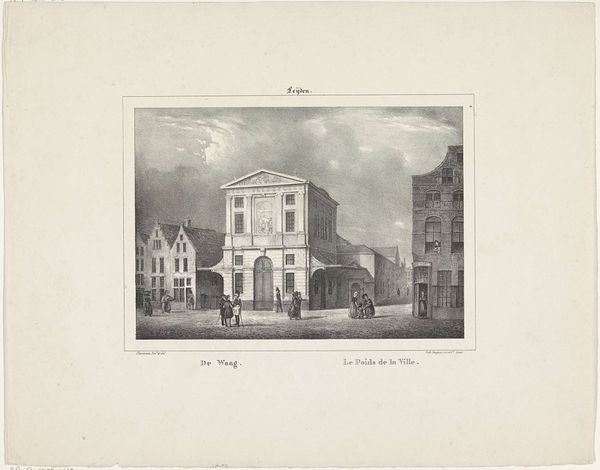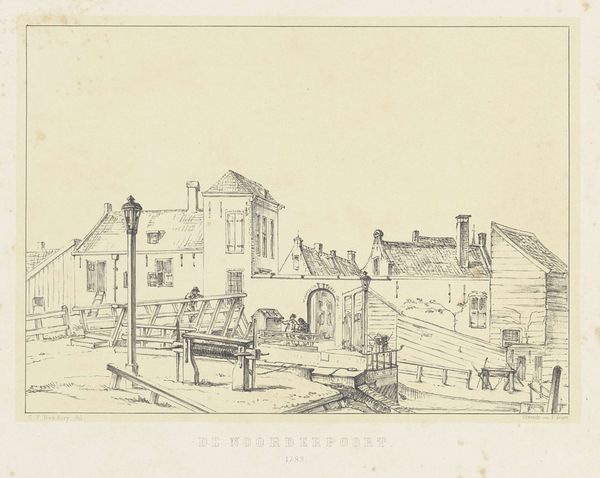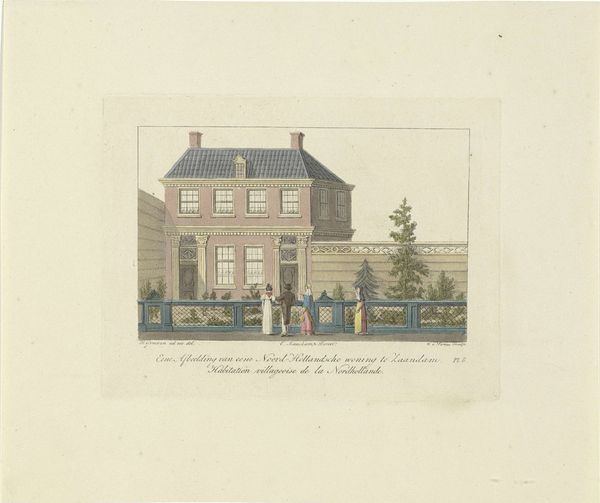
painting, watercolor
#
painting
#
landscape
#
watercolor
#
romanticism
#
cityscape
#
history-painting
Dimensions: height 336 mm, width 505 mm
Copyright: Rijks Museum: Open Domain
This print, "Ruïne van het Oost-Indisch Zeemagazijn," was made in 1822 by Jacob Plügger using etching and possibly some hand-coloring. It shows the ruins of the East India Company’s warehouse after a fire. The printmaking process itself gives us insight into the social context of the time. Etching allowed for the relatively quick reproduction of images, making them accessible to a wider audience than, say, an original painting. The controlled lines and tones of the etching emphasize the scene's structural devastation, the toppled timbers and collapsed walls. The figures in the foreground, small in comparison to the wreckage, underscore the scale of the disaster and perhaps the fragility of human endeavor in the face of such destruction. The choice of this subject matter – the ruin of a powerful trading company’s warehouse – hints at broader social issues related to commerce, wealth, and the impermanence of even the most established institutions. Plügger isn’t just showing us a ruined building, but also prompting reflection on the social and economic forces at play in 19th-century Amsterdam. Understanding the materials and processes behind this print gives us a richer appreciation of its historical and cultural significance.
Comments
No comments
Be the first to comment and join the conversation on the ultimate creative platform.
